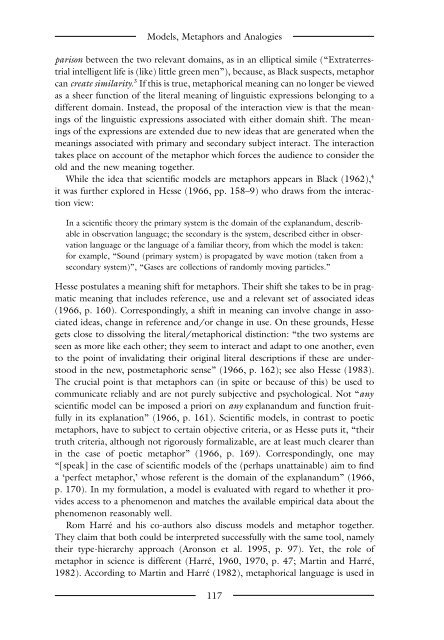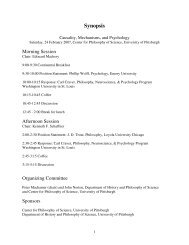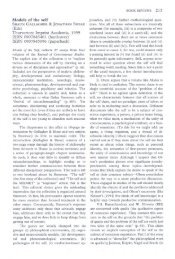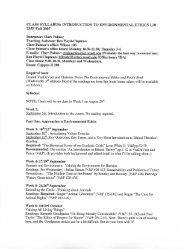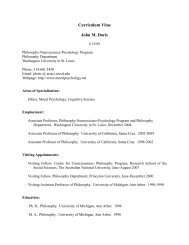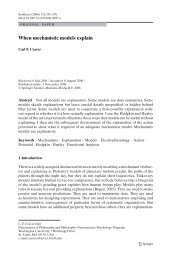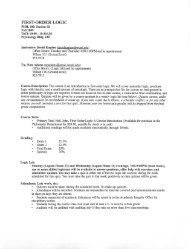The Blackwell Guide to the Philosophy of Science - The Department ...
The Blackwell Guide to the Philosophy of Science - The Department ...
The Blackwell Guide to the Philosophy of Science - The Department ...
You also want an ePaper? Increase the reach of your titles
YUMPU automatically turns print PDFs into web optimized ePapers that Google loves.
Models, Metaphors and Analogies<br />
parison between <strong>the</strong> two relevant domains, as in an elliptical simile (“Extraterrestrial<br />
intelligent life is (like) little green men”), because, as Black suspects, metaphor<br />
can create similarity. 3 If this is true, metaphorical meaning can no longer be viewed<br />
as a sheer function <strong>of</strong> <strong>the</strong> literal meaning <strong>of</strong> linguistic expressions belonging <strong>to</strong> a<br />
different domain. Instead, <strong>the</strong> proposal <strong>of</strong> <strong>the</strong> interaction view is that <strong>the</strong> meanings<br />
<strong>of</strong> <strong>the</strong> linguistic expressions associated with ei<strong>the</strong>r domain shift. <strong>The</strong> meanings<br />
<strong>of</strong> <strong>the</strong> expressions are extended due <strong>to</strong> new ideas that are generated when <strong>the</strong><br />
meanings associated with primary and secondary subject interact. <strong>The</strong> interaction<br />
takes place on account <strong>of</strong> <strong>the</strong> metaphor which forces <strong>the</strong> audience <strong>to</strong> consider <strong>the</strong><br />
old and <strong>the</strong> new meaning <strong>to</strong>ge<strong>the</strong>r.<br />
While <strong>the</strong> idea that scientific models are metaphors appears in Black (1962), 4<br />
it was fur<strong>the</strong>r explored in Hesse (1966, pp. 158–9) who draws from <strong>the</strong> interaction<br />
view:<br />
In a scientific <strong>the</strong>ory <strong>the</strong> primary system is <strong>the</strong> domain <strong>of</strong> <strong>the</strong> explanandum, describable<br />
in observation language; <strong>the</strong> secondary is <strong>the</strong> system, described ei<strong>the</strong>r in observation<br />
language or <strong>the</strong> language <strong>of</strong> a familiar <strong>the</strong>ory, from which <strong>the</strong> model is taken:<br />
for example, “Sound (primary system) is propagated by wave motion (taken from a<br />
secondary system)”, “Gases are collections <strong>of</strong> randomly moving particles.”<br />
Hesse postulates a meaning shift for metaphors. <strong>The</strong>ir shift she takes <strong>to</strong> be in pragmatic<br />
meaning that includes reference, use and a relevant set <strong>of</strong> associated ideas<br />
(1966, p. 160). Correspondingly, a shift in meaning can involve change in associated<br />
ideas, change in reference and/or change in use. On <strong>the</strong>se grounds, Hesse<br />
gets close <strong>to</strong> dissolving <strong>the</strong> literal/metaphorical distinction: “<strong>the</strong> two systems are<br />
seen as more like each o<strong>the</strong>r; <strong>the</strong>y seem <strong>to</strong> interact and adapt <strong>to</strong> one ano<strong>the</strong>r, even<br />
<strong>to</strong> <strong>the</strong> point <strong>of</strong> invalidating <strong>the</strong>ir original literal descriptions if <strong>the</strong>se are unders<strong>to</strong>od<br />
in <strong>the</strong> new, postmetaphoric sense” (1966, p. 162); see also Hesse (1983).<br />
<strong>The</strong> crucial point is that metaphors can (in spite or because <strong>of</strong> this) be used <strong>to</strong><br />
communicate reliably and are not purely subjective and psychological. Not “any<br />
scientific model can be imposed a priori on any explanandum and function fruitfully<br />
in its explanation” (1966, p. 161). Scientific models, in contrast <strong>to</strong> poetic<br />
metaphors, have <strong>to</strong> subject <strong>to</strong> certain objective criteria, or as Hesse puts it, “<strong>the</strong>ir<br />
truth criteria, although not rigorously formalizable, are at least much clearer than<br />
in <strong>the</strong> case <strong>of</strong> poetic metaphor” (1966, p. 169). Correspondingly, one may<br />
“[speak] in <strong>the</strong> case <strong>of</strong> scientific models <strong>of</strong> <strong>the</strong> (perhaps unattainable) aim <strong>to</strong> find<br />
a ‘perfect metaphor,’ whose referent is <strong>the</strong> domain <strong>of</strong> <strong>the</strong> explanandum” (1966,<br />
p. 170). In my formulation, a model is evaluated with regard <strong>to</strong> whe<strong>the</strong>r it provides<br />
access <strong>to</strong> a phenomenon and matches <strong>the</strong> available empirical data about <strong>the</strong><br />
phenomenon reasonably well.<br />
Rom Harré and his co-authors also discuss models and metaphor <strong>to</strong>ge<strong>the</strong>r.<br />
<strong>The</strong>y claim that both could be interpreted successfully with <strong>the</strong> same <strong>to</strong>ol, namely<br />
<strong>the</strong>ir type-hierarchy approach (Aronson et al. 1995, p. 97). Yet, <strong>the</strong> role <strong>of</strong><br />
metaphor in science is different (Harré, 1960, 1970, p. 47; Martin and Harré,<br />
1982). According <strong>to</strong> Martin and Harré (1982), metaphorical language is used in<br />
117


